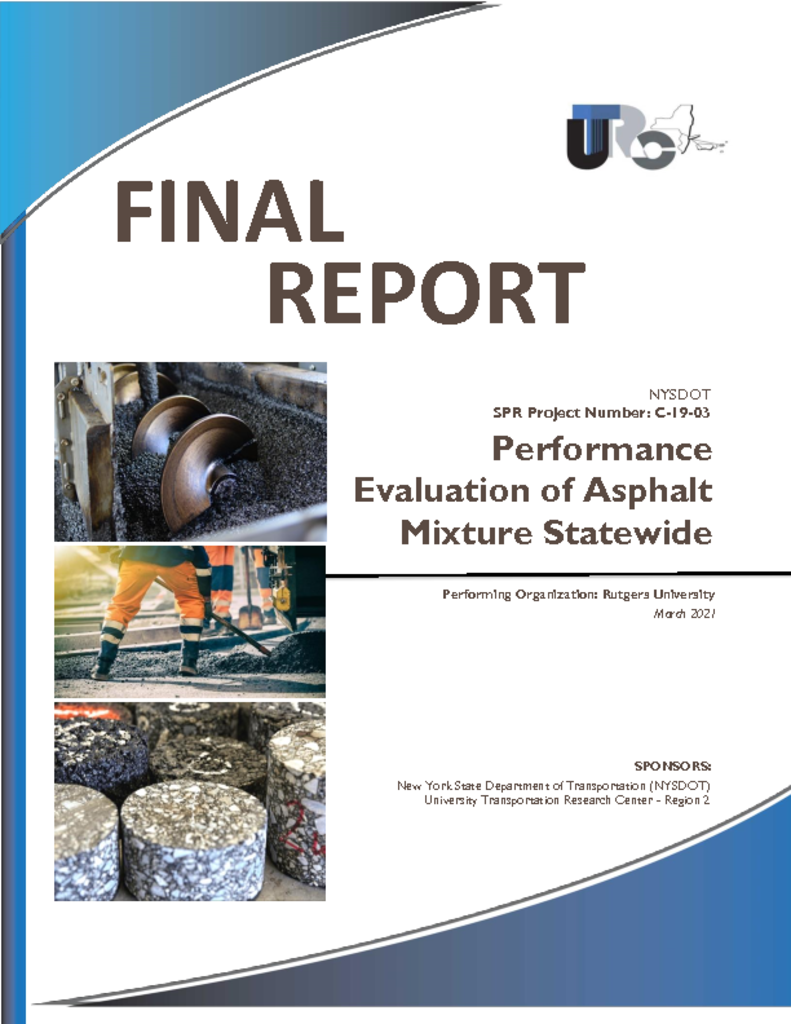Currently, asphalt mixtures are design using volumetric concepts to determine optimum asphalt content levels with no means of verifying mixture performance prior to field production and placement. A new design methodology called Balanced Mixture Design (BMD) promotes the use of evaluating and design asphalt mixture using rutting and fatigue cracking methods and criteria to achieve an optimum asphalt content that will result in an asphalt mixture performing well in rutting and fatigue cracking scenarios – thereby “balancing” the asphalt mixture performance. A study was conducted using approved New York State Department of Transportation (NYSDOT) approved asphalt mixtures within this BMD procedure. The approved asphalt mixtures were previously designed using volumetric concepts, allowing for a comparison between performance-based design procedures (BMD) and volumetric procedures. The study showed that of the eleven (11) asphalt mixtures evaluated, six (6) of the asphalt mixtures were found to not meet the BMD fatigue cracking based minimum asphalt content. None of the approved asphalt mixtures failed the rutting performance criteria. The data generated in the study also enabled for the recommendation of performance criteria for the High Temperature IDT Strength test for rutting and IDEAL-CT Index test for fatigue cracking.




